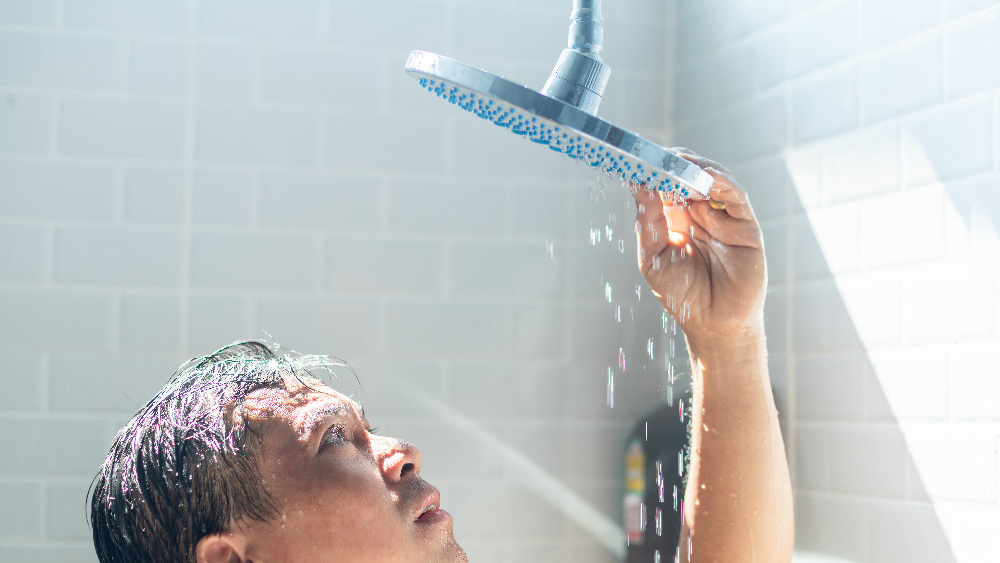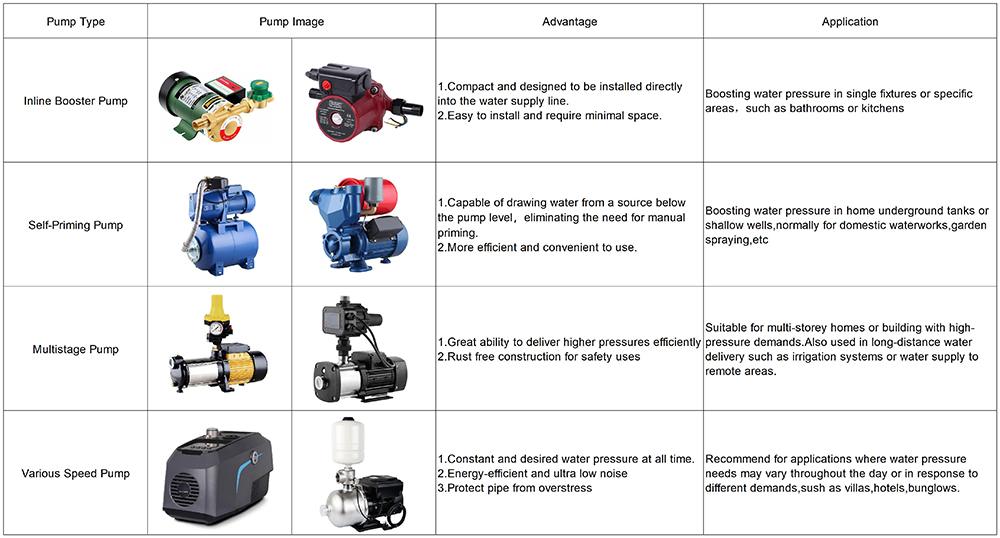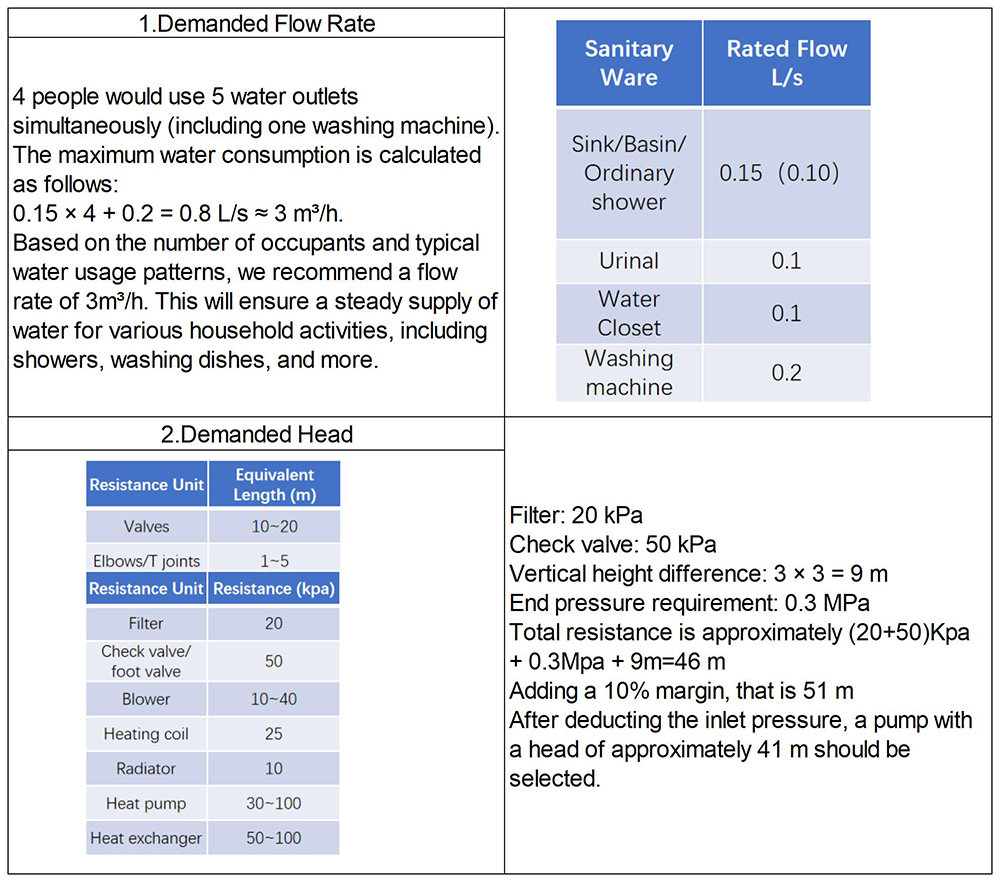+86 13816508465
Pump Solutions
Aug. 18, 2023
Are you struggling with low water pressure in your home? Is your shower lacking the invigorating force you crave? If so, you're not alone. Many homeowners face similar challenges, but the solution lies in finding the right home booster pump. In this comprehensive guide, we'll walk you through the step-by-step process of choosing the perfect home booster pump that will elevate your water pressure and transform your daily routines.

Step 1: Understanding the Need for a Home Booster Pump
1.1 Common causes of low water pressure at home
With the gradual improvement of living standards and awareness of water safety, it is extremely common to install water purifiers, large showers and smart toilet at home. These devices all have certain requirements on water pressure to meet the best customer experience. Meanwhile, the building height and elevation affects water pressure largely. Homes located at higher elevations may experience lower water pressure due to gravitational forces. Especially at the morning and evening peak hours, there are multiple taps opening at the same time which could create severe insufficient water pressure.
1.2 Benefits of installing a booster pump at home
A home booster pump will solve these issues while enhance the overall water system performance.
Here are some key benefits:
Improved Water Flow:
A booster pump increases water pressure, ensuring a steady and consistent flow throughout the house. This means faster filling of sinks, tubs, and appliances.
Enhanced Appliance Performance:
Low water pressure can negatively impact the performance of appliances like washing machines, dishwashers, and showers. By boosting water pressure, a home booster pump improves the efficiency and effectiveness of these appliances.
Increased Comfort:
Adequate water pressure is essential for a comfortable showering experience. With sufficient water pressure, you can enjoy a strong, invigorating shower that provides a refreshing start to your day.
Water Conservation:
In some cases, people compensate for low water pressure by keeping faucets open longer, leading to wasted water. By increasing water pressure with a booster pump, you can achieve the desired flow without excessive water usage.
Step 2: Assessing Your Requirements
When considering the installation of a home booster pump, it is crucial to identify the specific needs and goals that you aim to achieve. This involves evaluating your household's unique requirements and understanding how a booster pump can address them effectively.
One important aspect to consider is determining the required flow rate and pressure range that can adequately meet your household's water pressure demands. Assessing the number of occupants, water usage patterns, and the types of appliances and fixtures in your home will help you establish the desired performance levels. For instance, if you frequently use multiple showers simultaneously or have high-flow appliances like rain showers or garden sprinklers, you'll need a booster pump capable of supplying sufficient water pressure and flow.
Factors such as the number of floors in your home also play a role in determining the appropriate booster pump. Higher floors typically experience reduced water pressure due to the gravitational forces acting against the upward flow. A booster pump can help compensate for the pressure loss and ensure consistent water pressure throughout your home.
Peak usage times, such as mornings when everyone is getting ready for the day or evenings when multiple appliances are in use, should also be taken into account. These times may require higher water pressure and flow to accommodate the simultaneous demands. By considering these peak usage periods, you can select a booster pump that can handle the increased water requirements during these times.
Step 3: Types of Home Booster Pumps
There are different types of booster pumps including inline, self-priming, multi-stage and variable-speed pumps.
Here are the advantages and recommended applications for the common market types.

Step 4 What to consider when choose a home booster pump
Besides the pump types, there are also some key factors to consider during pump selection.
4.1 Pump Capacity
The pump capacity refers to the volume of water the pump can deliver per unit of time. It is crucial to choose a booster pump with the appropriate capacity to meet your household's water demand. Assess factors like the number of fixtures, simultaneous usage, and peak water flow requirements to determine the required pump capacity. Selecting a pump with adequate capacity ensures consistent water pressure throughout your home.
4.2 Power Requirements
Understanding the power requirements of the booster pump is essential to ensure compatibility with your electrical system. Consider factors such as voltage, power consumption, and electrical circuit capacity. It is recommended to consult a professional electrician to ensure proper electrical installation and avoid overloading circuits.
4.3 Noise Levels
Noise levels can significantly impact comfort, especially if the booster pump is installed near living areas or bedrooms. Look for pumps that are designed to operate quietly or consider additional noise reduction measures, such as installing vibration pads or soundproofing enclosures. Check the pump's noise level specifications before making a purchase decision.
4.4 Space Availability
The available space for installing the booster pump is an important consideration. Different types of pumps have varying size requirements. Assess the available space in your utility area, basement, or other designated locations to ensure proper installation. Inline booster pumps, for example, are often compact and can be installed directly into the water supply line, making them suitable for limited spaces.
4.5 Installation Requirements
Consider the installation requirements and compatibility with your existing plumbing system. Some booster pumps may require additional fittings, valves, or adapters for proper installation. It is advisable to consult a professional plumber to ensure correct installation, minimize the risk of leaks or damage, and ensure optimal performance.
4.6 Maintenance Considerations
Assess the maintenance requirements of the booster pump. Some pumps may require periodic cleaning, filter replacement, or lubrication. Consider the ease of access for maintenance tasks and ensure that you can comfortably perform routine upkeep. Regular maintenance helps prolong the pump's lifespan and ensures consistent performance.
Step 5 Evaluating Pump Features and Technologies
Advanced features in booster pumps offer enhanced performance, energy efficiency, and convenience. Some notable features include:
5.1 Energy Efficiency
Many modern booster pumps are designed with energy-efficient technologies, such as variable-speed motors or intelligent controls. These features allow the pump to adjust its speed or power consumption based on the actual water demand, resulting in energy savings and reduced operating costs over time.
5.2 Automatic Control
Booster pumps equipped with automatic controls offer convenience and efficiency. These controls can sense water pressure levels and automatically activate or deactivate the pump as needed. They ensure consistent water pressure without manual intervention and can also provide protection against dry running or overload conditions.
5.3 Self-Priming Capability
Self-priming booster pumps eliminate the need for manual priming. They can automatically draw water from a lower source or lift water from a well or storage tank, making installation and operation more convenient. Self-priming pumps are particularly useful in situations where the water source is located below the pump level.
5.4 Innovative Technology
Advancements in pump technology have led to innovative features that enhance performance and reliability. For example, some pumps employ advanced impeller designs or materials to improve efficiency and reduce noise levels. Others incorporate smart monitoring systems that provide real-time data on pump performance, allowing for proactive maintenance and troubleshooting.
For more info, please go directly to this article.
https://www.streampumps.com/pump-solutions/ideal-home-pumping.html
Step 6 Case Study: how to select a booster pump?
Let’s start with an example.
Suppose you have a 3-story villa with 4 people in. The water pressure at the entrance is relatively low, reaching a minimum of only 0.1 MPa. On the 3rd floor, there is a high-end shower head that requires driving pressure of 0.3 MPa. Let's calculate the required flow rate and head (lift) for the water pump.

Considering the vertical distance between the water source (cold water tank or main supply) and the highest water outlet (3rd floor shower), we have determined that the pump should provide a total head of [41] meters. This will guarantee the desired water pressure on every floor of your villa.
Key factors to consider
Now I know the demanded pump capacity and flow, but there are so many types of pumps with the same requirements. Consider the installation space, the noise level, the piping requirements and the pump materials to help fix the final pump type.
For example,if I have limited space under the kitchen and I need low noise and pure water usage, then a stainless steel compact inverter pump is suitable.
If I have large space at rooftop/basement to install the pump and price is what I consider most, then a self priming pump or multistage pump with pressure accessories is more preferable.
Conclusion
Choosing the right home booster pump is crucial for optimizing your water pressure and ensuring a seamless water supply throughout your home. By following this step-by-step guide, you'll be equipped with the knowledge and insights necessary to make an informed decision. Remember, selecting a reliable pump from a trusted manufacturer is key to long-term satisfaction and performance. Don't let low water pressure dampen your daily experiences—master the flow with the perfect home booster pump!
We hope you found this guide helpful. If you have any questions or would like to explore our range of high-quality home booster pumps, please reach out to us. Don't forget to share this guide with others who might benefit from it.
Address
No.17 XeDa Jimei Ind. Park, Xiqing Economic Development Area, Tianjin, China
Telephone
+86 13816508465
QUICK LINKS